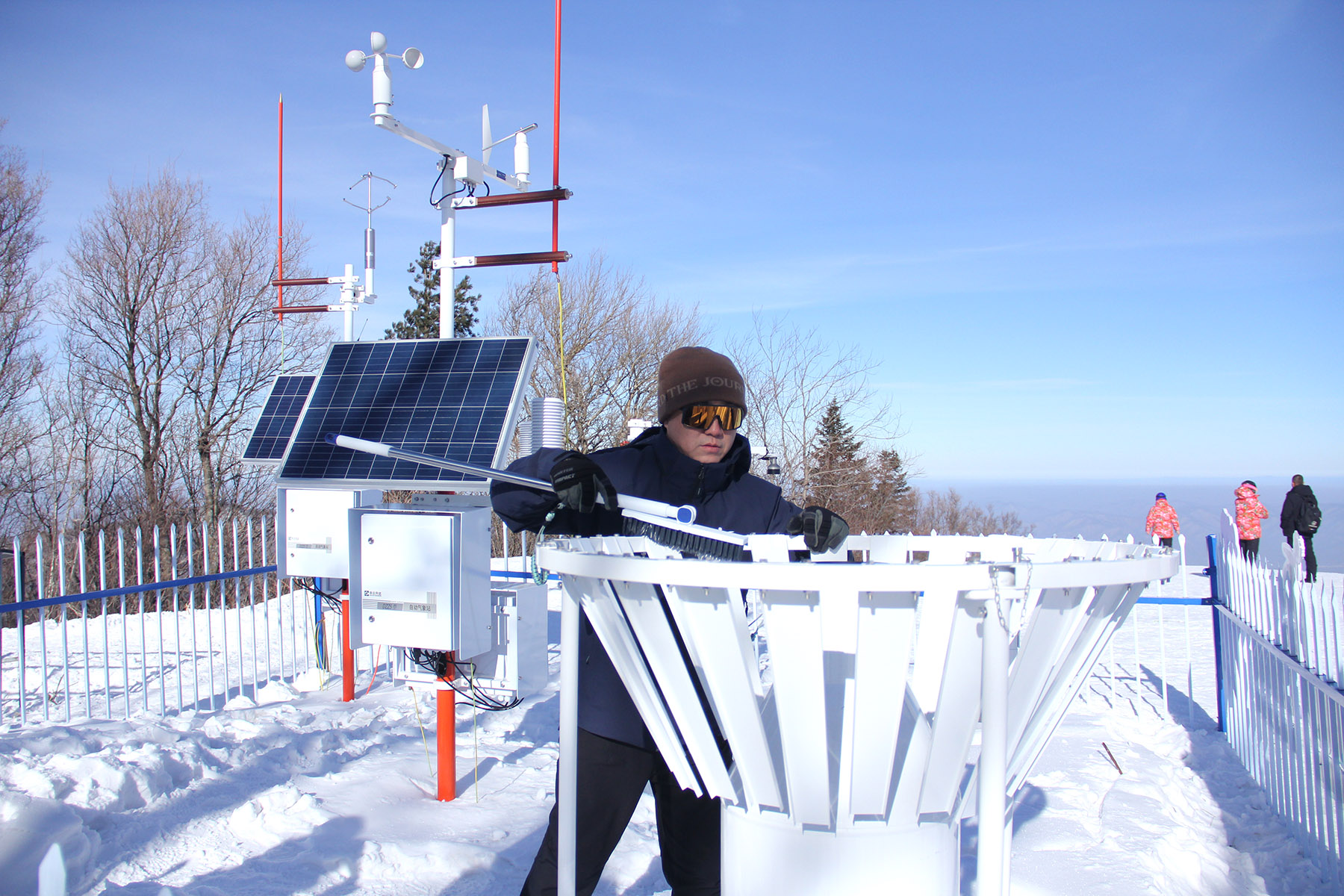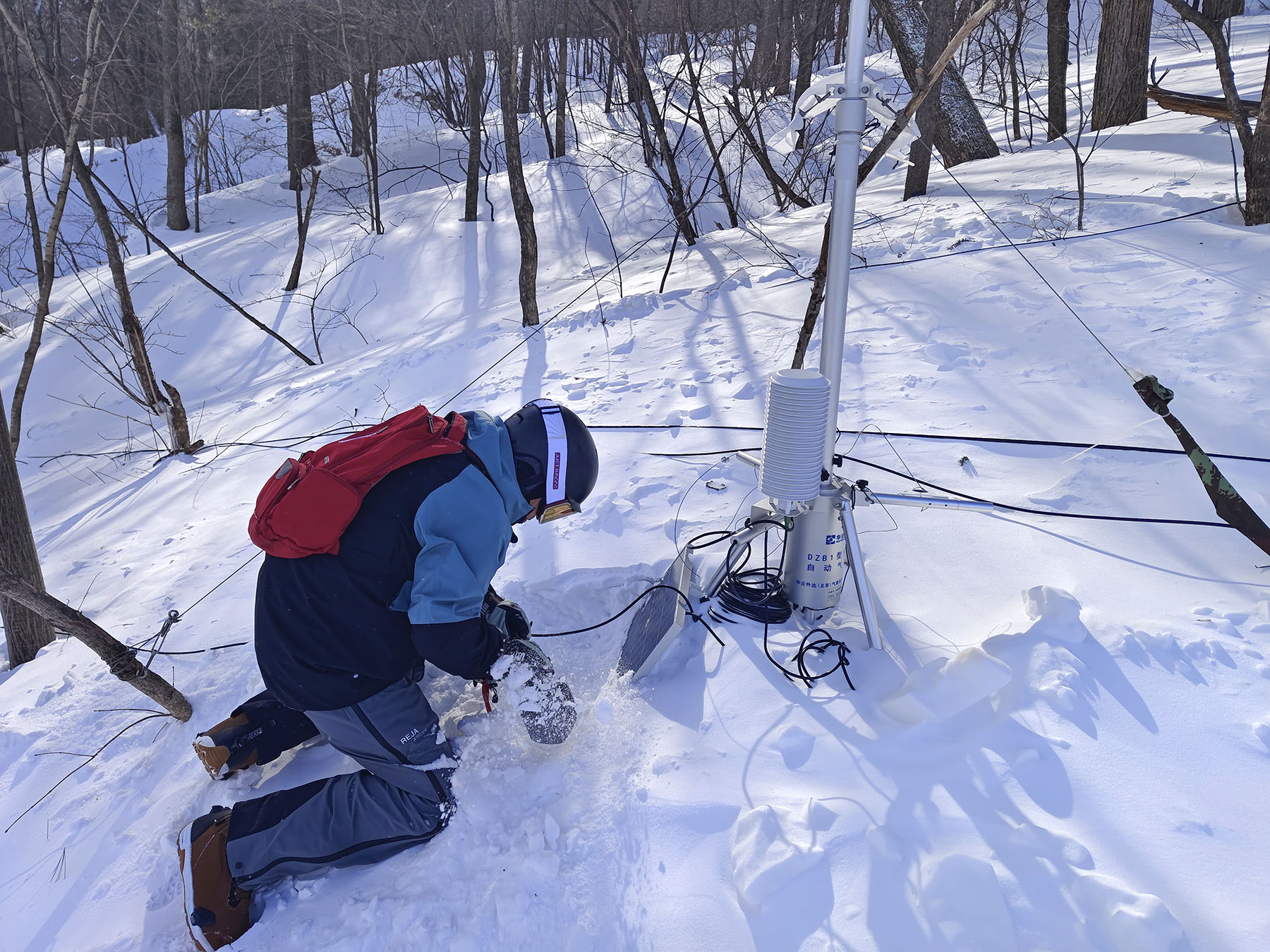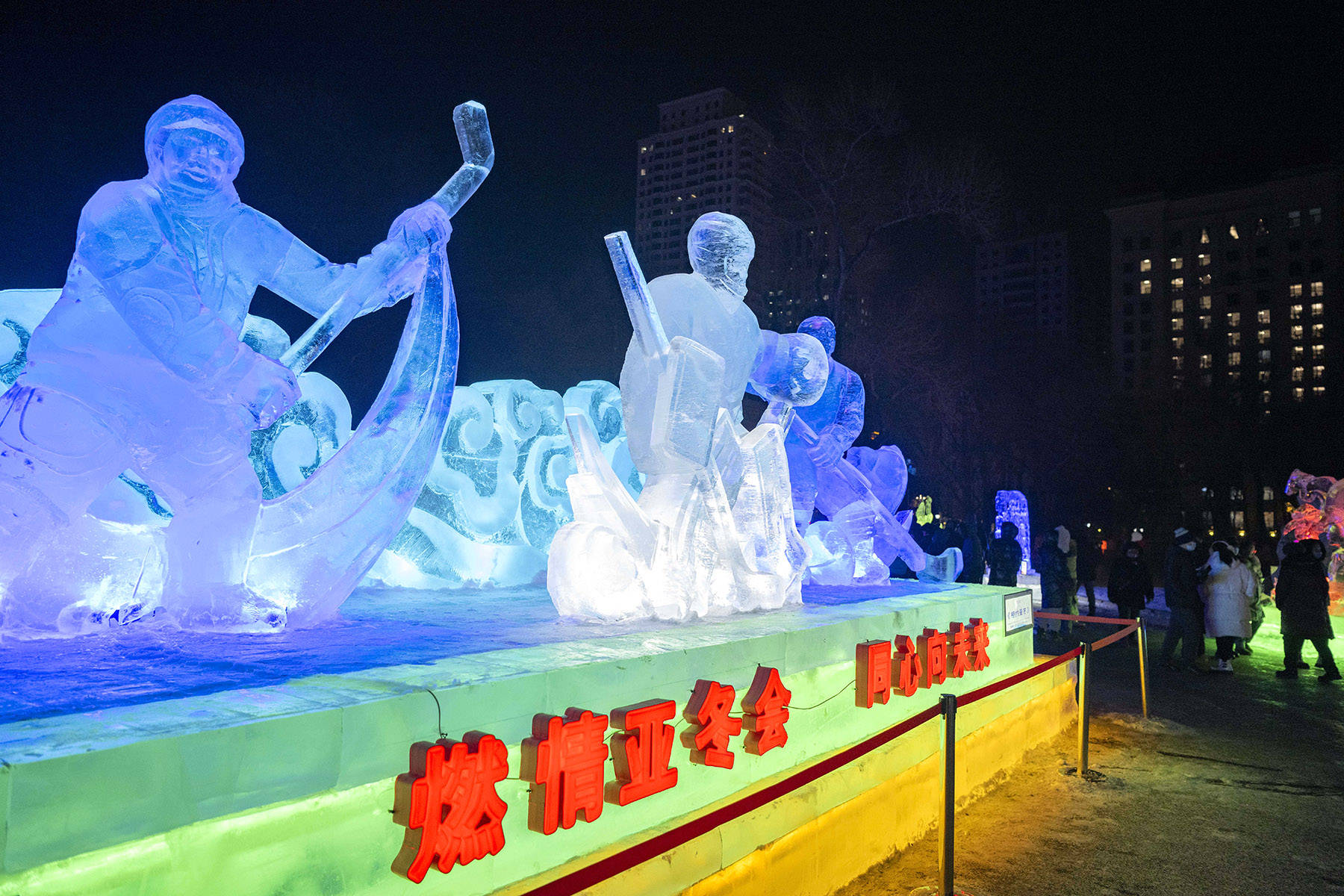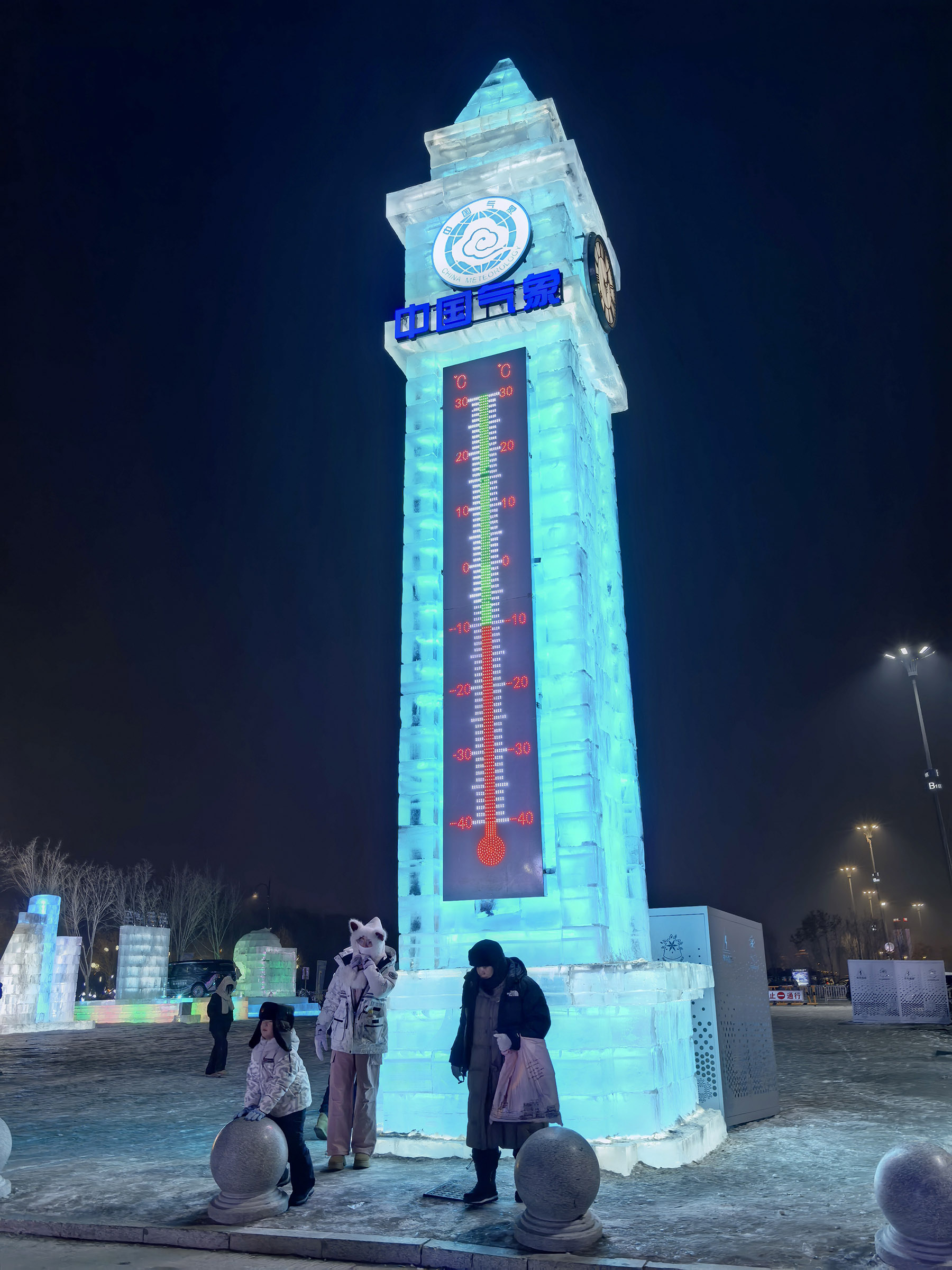Forecasters work to ensure Asian Winter Games held without hitch

On Jan 15, weeks ahead of the holding of the 9th Asian Winter Games in Harbin, Heilongjiang province, forecasters huddled over monitoring equipment in a command center to assess the weather conditions before a freestyle skiing test event at the Yabuli competition zone.
The wind was picking up at the main venue for the test event, and a critical decision as to whether to go ahead or postpone the following day's semifinal needed to be made based on the forecasting data.
Tang Kai, chief forecaster at the meteorological station for the Games, said that fierce gusts could jeopardize the safety and performance of athletes, and so team leaders and referees decided after a vote, along with the organizing committee, to postpone the event by a day.
When the following day arrived, the wind seemed mild at first, but mighty gusts arrived by midday, howling across the slopes, Tang recalled, thus highlighting the critical role forecasting plays in ensuring the safety of competitors at the Games.
READ MORE: Asian Winter Games: Hot weather nations aim to impress on ice, snow
"The ferocity of the wind was undeniable, and its impact on the high-flying maneuvers of the athletes is impossible to ignore," he said.
On the morning of Jan 21, both the coaches and athletes at the halfpipe competition, another test event for the Games, were pleased with the sunny weather conditions in Yabuli.
Coach Shen Xiaoxue said the wind on that day was mild for halfpipe events, noting that wind speeds of around 10 meters per second can have a considerable impact on athletes' performance.
"Wind direction also plays a crucial role, especially for aerial tricks. Athletes regularly check weather forecasts before training to adjust their routines," Shen said.
As the Games get underway, a meteorological team of nearly 100 people are working to help ensure that weather conditions do not disrupt the events, particularly outdoor snow competitions such as cross-country skiing and snowboarding.

Outdoor winter sports are highly sensitive to changes in weather, with factors like snowfall, temperature, wind speed and visibility directly influencing the events, said Li Guang, director of the competition department of the executive committee of the Games.
"Meteorological accuracy is crucial for both athletes' safety and performance," Li said.
For instance, temperatures as low as — 25 C are typically a sign that cross-country skiing and biathlon events may need to be delayed. Similarly, if temperatures rise too much, snow on the course could begin to melt, making it difficult for athletes to control their movements during sharp turns, particularly in alpine skiing.
Snowfall can pose further challenges. Fresh snow increases friction, which slows athletes down and affects their balance, especially during jumps or quick accelerations. Heavy snow can also obscure racecourse markers, posing safety risks for competitors, Li said.
"During a recent test event for alpine skiing, we adjusted cable car operations and cleared snow from the courses based on forecasts provided by meteorological teams to ensure the smooth running of the event," he said.
The meteorological data for the snow sports venues at the Games is collected by 37 meteorological stations established since late 2023 at the Yabuli Ski Resort, located about two hours' drive from Harbin.
The stations are comprised of large fixed installations on major mountaintops and smaller portable ones strategically placed across different courses according to the specific needs of each track, said Han Hongliang, a meteorological service worker for the Games.
One of the unique challenges faced by Han and other members of the meteorological team in Yabuli has been the need to physically transport equipment to remote and hard-to-reach locations on the mountain.
"In the early days, before the ski resort was open to the public and the cable cars were running, we had to carry all the equipment up the mountain by hand," Han said, adding that setting up larger stations could take up to two days.
Since the stations have been established, service workers like Han have been regularly inspecting the equipment and maintaining it to ensure accurate data collection.
As part of a comprehensive monitoring system, these stations gather initial data for technicians to analyze at a central station, which is then sent to meteorologists like Tang on the front line for processing, Han said.

Legacy of Beijing 2022
Most members of the team participated in meteorological support for the Beijing 2022 Olympic Winter Games and the 14th National Winter Games held in the Inner Mongolia autonomous region last year, drawing heavily on the lessons learned from the top-tier winter competitions.
Meanwhile, the meteorological team in Harbin is navigating the unique challenges posed by the Yabuli resort's complex terrain, and introducing innovative technologies to ensure the safety and fairness of the Games.
Though Yabuli and Chongli in Zhangjiakou, Hebei province — where most snow events of the Beijing Games were held — are both mountainous regions, differences remain in altitude and vegetation, said Tang, the chief forecaster who took part in both events.
While the mountains in Chongli are characterized by less vegetation and relatively predictable wind patterns, Yabuli's dense forests and higher tree line create a more chaotic and unpredictable wind environment.
"The wind patterns in Yabuli are more erratic due to the terrain and vegetation, which make forecasting for wind gusts particularly challenging," Tang said.
The elevation of Yabuli, at around 1,400 meters, is also lower than Chongli's peaks, which reach up to 2,000 meters. The difference in altitude and topography has required the meteorological team to adapt their forecasting models, which were developed for the Beijing Games, he added.
The meteorological support system for the Beijing Games was the result of years of meticulous preparation. The team began its work in 2017, with extensive data collection and model refinement over several winters.
In contrast, the Yabuli station has only experienced one winter since it was established, leaving limited time for data accumulation and team cooperation.
Despite this, the team has managed to achieve a high level of coordination in a short period, thanks to the experience gained from Beijing, Tang said. "During the Beijing Winter Olympics, we developed a deep understanding of how to work together, both among forecasters and with the weather conditions. We've brought that tacit understanding to Yabuli," he said.
One technological innovation that is being used at these Games is mobile cabin meteorological stations parked up near competition zones, providing vertical atmospheric profiles and offering insights into conditions at higher altitudes, Tang said.
The ground-based remote sensing vertical observation system can provide real-time data on atmospheric temperature, humidity, wind speed and cloud conditions from the ground up to 10 kilometers high.
The evolution of meteorological support for winter sports in China reflects a shift from basic weather forecasting to a more precise approach that considers the specific needs of athletes and organizers, Tang said.

Ice sports and ceremonies
Apart from snow events, the opening and closing ceremonies as well as the indoor ice sports at the Games also require precise weather support to ensure their smooth running.
Zhao Guangna, deputy director of the Games' meteorological station, said one of the key tasks for the city's meteorological team was supporting the flame-lighting ceremony, which relied on an "ice lens" to focus sunlight and ignite the torch.
"The most important factor for the flame-lighting was cloud cover," Zhao said. "We needed clear skies to ensure the ice lens effectively concentrated the sunlight."
The team monitored a range of factors, including air pollution, wind speed, wind direction and visibility to ensure optimal conditions. "Even a slight change in visibility or wind speed could have disrupted the ceremony," she said.
ALSO READ: Space tech underpins stellar Games
The opening and closing ceremonies, featuring elaborate fireworks displays, posed another challenge for the meteorological team. "Fireworks require very specific weather conditions," Zhao said, adding that wind speed and direction are critical to ensuring safety and visual impact.
The meteorological services even extend indoors to the highly sensitive ice sports, particularly curling, due to the sport's reliance on precise ice conditions. "We have been paying close attention to the possible impact on the ice rink caused by temperature or humidity fluctuations, providing precise forecasting services," Zhao said.
To address the problem, the team has installed eight mini weather stations inside the curling venue.
The weather team's preparations for the Games have been rigorous, with seven test ice sports events conducted between September and January. "Each test event allowed us to refine our forecasting models and ensure seamless coordination with organizers," Zhao said.
The 9th Asian Winter Games in Harbin will see 1,275 athletes from 34 countries and regions compete across 64 events from Feb 7 to 14.


